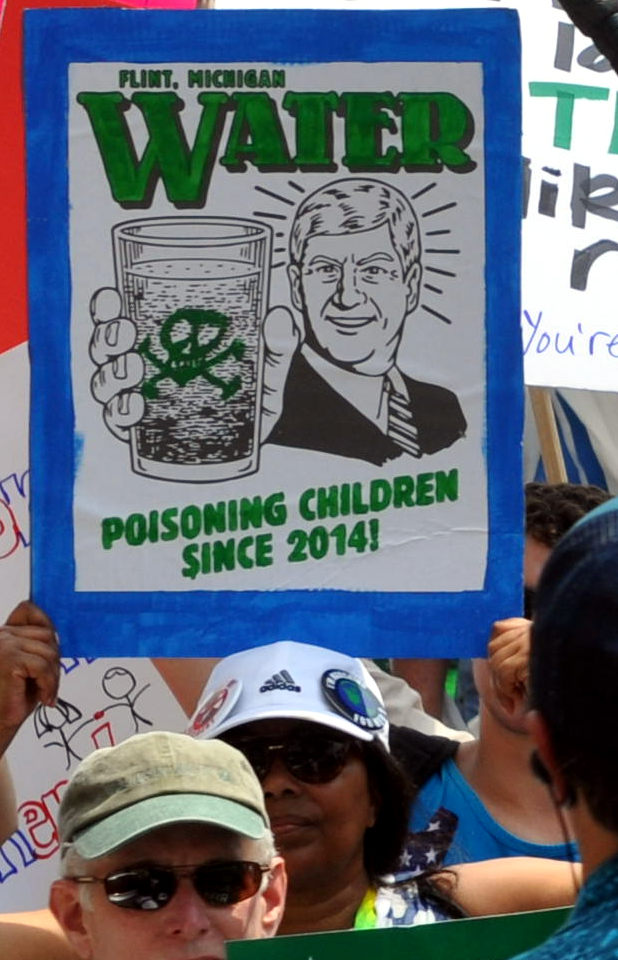Flint, MI residents still worried about water quality
February 14, 2019
Have you ever been worried about the quality of the water coming out of a faucet, water fountain, or shower? Most people in America can easily answer that question by stating, “no.”
Although, in recent years, residents of Flint, MI were unable to comfortably answer negatively. In 2014, Flint, MI officials decided to switch their source of water. This decision was made in order to save money.
They were expected to save $20 million over 25 years by changing from the Detroit Water and Sewage Department to a new, cheaper system called the Karegnondi Water Authority.
This seemed like a great idea but they ran into a problem. The Karegnondi Water authority would not be equipped to supply water for the people of Flint for another two to three years.
On Apr. 9, 2014, Flint’s emergency manager, Darnell Earley, told citizens that for the time being, they would be receiving their water from the Flint River until their new water source was ready.
Shortly after the switch, residents began criticizing the smell, taste, and appearance of the water. The brown water reeked and its taste was not any more pleasing. Several meetings were held where people were able to express their concerns, complaining that what came out of their faucets and showers seemed like it came straight from the sewer.
The crisis soon got the media’s attention and attracted researcher, Marc Edwards, from Virginia Tech. He discovered extremely unsettling realities about Flint’s water. Lead pipes were being used which is not an uncommon occurrence.
However, a necessary coating within the pipes was worn away in many places exposing the lead to the drinking water. Testing was done to
find that 90 percent of homes were using water that contained lead levels of 27 parts per billion when the accepted value is 5 ppb. The other ten percent of the population struggled with water that was even more contaminated. The most dangerous sample taken from a house by Edwards showed a lead level of 13,000 ppb.
As expected, the people of Flint were upset. They called on officials to make changes quickly. A state emergency was declared but action to provide safe drinking water was not given until 2016 when free bottled water was distributed.
The Flint water crisis has been estimated to cost the city around $400 million after not only fixing the pipes but also taking responsibility for all the issues it has caused individuals.
The effects of this crisis are devastating. Many health problems arose due to the lead levels with 14 total deaths linked to the outbreak. There is also still an unwavering, general distrust for the government. People of Flint are still uneasy about the drinking water even though the administration insists it is now safe.
